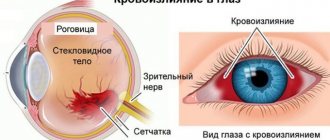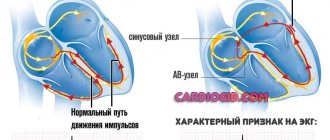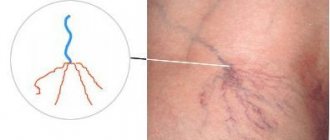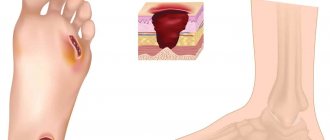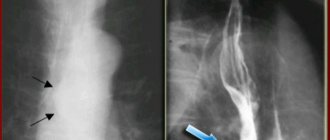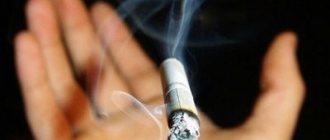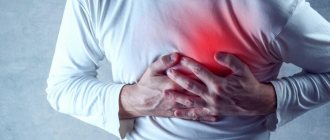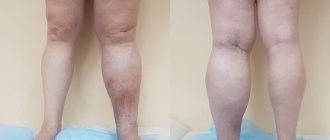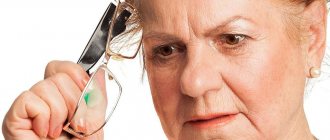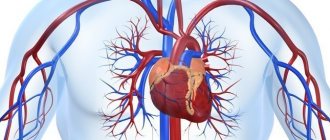One of the first places in the world is occupied by mortality from cardiovascular diseases. Vascular diseases, blockage of arteries and veins negatively affects the functioning of all organs of the body.
Arteries are blood vessels that carry oxygenated blood throughout the body. With the bloodstream, the necessary vitamins, hormones, and nutrients are carried to every part of the human body. Healthy blood vessels have smooth inner walls, and blood flows smoothly through them.
What is vascular blockage?
Blockage of blood vessels occurs due to various factors:
- thrombosis;
- injuries;
- the appearance of atherosclerotic plaques on the walls.
A thrombus is a blood clot that forms as a result of damage to the inner wall of an artery. The plaque is formed from substances circulating in the blood: calcium, cholesterol, fibrin. The body evaluates this formation as a defect and the process of thrombus formation begins. Unlike arterial thrombosis, venous thrombosis is not characterized by cholesterol deposition.
As deposits build up in the arteries, a condition called atherosclerosis occurs. This condition leads to narrowing and hardening of blood vessels.
Risk factors contributing to vascular blockage:
- increased cholesterol levels;
- high blood pressure;
- diabetes;
- smoking;
- obesity;
- sedentary lifestyle;
- genetic predisposition.
Symptoms of vascular blockage
Often, poor arterial patency does not cause any pain until a serious complication such as a stroke develops.
In other cases, especially when more than half of the artery is blocked, symptoms such as:
- discomfort, chest pain;
- severe shortness of breath;
- rapid heartbeat;
- dizziness;
- nausea;
- weakness;
- sweating
Due to a decrease in blood flow to the heart, chest pain (angina) appears, then coronary heart disease develops.
Peripheral artery blockage can cause:
- Leg pain.
- Poor healing of foot injuries.
- Gangrene.
If there is obstruction of the cerebral vessels, a person experiences headaches, constant or periodic, increased blood pressure, dizziness, vomiting, and unclear consciousness.
Consequences of the disease
Depending on the location of the damaged vessel, various complications arise. With obstruction in the extremities, nagging pain in the legs first appears, then trophic ulcers and tissue necrosis. Amputation is indicated, otherwise gangrene may develop. With prolonged ischemia of the heart vessels, myocardial infarction occurs. Long-term obstruction of blood vessels in the brain causes a stroke.
1.General information
Obviously, there is no need to describe in detail the key role and countless functions of the brain in the human body. Let us only note that the central nervous system, i.e. The brain and spinal cord are an incredibly complex organ that controls absolutely all processes, including the activity of the endocrine glands (which, in turn, regulate the functioning of internal organs through hormones). For the most part, this control by the central nervous system is carried out automatically, without the participation of consciousness. However, the neural tissue of the brain, like any other living tissue, can perform its functions productively only if there is a constant supply of nutrients and energy, i.e. oxygen necessary for redox biochemical reactions. The brain receives all this through the bloodstream. And if for some reason the flow of arterial blood enriched in the lungs is sharply reduced or completely blocked, a catastrophe will very soon occur in this area, in the literal sense of the word.
Ischemia (lack of blood supply) triggers dystrophic and degenerative changes (structural and functional degradation of tissue, which, against the background of constant starvation, copes with its tasks increasingly poorly); then atrophy occurs - gradual death and reduction in volume. In the event of a sudden interruption (ischemic attack), if the blood supply is not restored quickly enough, necrosis begins - mass death of specialized cells. In general, this terrible phenomenon is called “infarction” (of the myocardium, kidney, spleen, etc., including the brain), however, in relation to the central nervous system, the term “stroke” (literally “stroke”, more accurate modern) is more often used term – stroke, i.e. acute cerebrovascular accident). Strokes are divided into two unequal groups: rarer hemorrhagic strokes (hemorrhages), caused, for example, by the rupture of a congenital arterial aneurysm, and ischemic strokes (over 80% of all strokes), associated with restriction or blocking of blood flow through the vessels supplying the brain.
A must read! Help with treatment and hospitalization!
Diagnostics
If poor patency of arteries and veins is suspected, the following studies are performed:
- Cholesterol analysis.
- Chest X-ray.
- CT scan.
- Ultrasound.
- Echocardiogram.
- ECG.
- MRI scan.
- Angiogram.
Magnetic resonance imaging (MRI) uses magnets and radio waves to produce images inside the body without a surgical incision. Unlike CT scans, MRIs do not use ionizing radiation. This is considered a safer alternative.
Physical education is your main assistant
The benefits of physical therapy are beyond doubt, since, firstly, during active exercise, especially in the fresh air, the cells and tissues of the body are saturated with oxygen, and secondly, blood circulation increases and the heart muscle is strengthened. Aerobic activities that increase the heart rate are preferable - walking, running, skiing, cycling.
It is known that with atherosclerosis, lipids and cholesterol are deposited on the walls of the arteries, thereby leading to a narrowing of the lumen of the vessels and even to their clogging. In the prevention of atherosclerosis, physical education acts as follows. Fatty substances consumed by a person in excess do not settle in the vessels, but are burned by the body during exercise, and their safe level is maintained in the blood, coronary blood flow increases.
Physical activity depends on the age, functional state of the person, and also on whether he or she already has any diseases of the cardiovascular system. Those who have never been involved in physical education and sports should start with walking.
Doctors have found that the minimum dynamic load is as follows: 3 times a week for 30 minutes at a comfortable pace. Those who engage in recreational running should remember that it is not recommended to run more than 30-40 km per week, since in this case the body’s reserves are depleted and performance decreases.
In addition to aerobic exercise, gymnastics has benefits for the body. You can do the following exercises:
- Rotation with hands clenched into fists, as well as feet pointed on toes (20 times in one direction and the other);
- Rhythmic compression-extension of the hands (30 times);
- Rotations of the body left and right with arms spread to the sides (10 times);
- Swing with a straight leg forward, while reaching for your toes (10 swings with each leg);
- Lunges forward with each leg alternately (10-20 times);
- Vertical leg lift to prevent vascular diseases of the legs (1-2 minutes).
This complex can be included in morning exercises, or performed at any convenient time. It is important that the room is well ventilated and that the person wears comfortable clothing that does not restrict movement. But there are a number of the following contraindications to physical education:
- Acute forms of myocarditis, endocarditis, rheumatism;
- Acute heart failure;
- Myocardial infarction;
- Irregular heart rhythm, accompanied by severe pain in the heart area.
To properly structure your training, you need to adhere to the following rules:
- Any load should begin with a warm-up;
- Systematicity involves at least 3 classes per week;
- The pulse should not exceed 120-140 beats per minute;
- If dizziness, pain in the heart or nausea occurs, stop exercising.
Treatment of vascular blockages
There are many options for preventing and treating blood clots. Depending on the severity of the condition and the patient's medical history, the doctor prescribes various methods.
Disease prevention:
Quitting bad habits, urgent lifestyle changes:
- a diet low in saturated fat and cholesterol, less sugar and simple carbohydrates, and high in fruits and vegetables;
- body weight loss;
- ban on smoking and alcohol;
- fitness classes;
- minimizing stress;
- lowering blood pressure and cholesterol using folk remedies;
- maintaining low blood sugar levels by avoiding large amounts of sweets, jam, and sweets.
Drug treatment
Some medications help prevent clogged arteries, such as:
- cholesterol-lowering medications;
- drugs that lower blood pressure;
- blood thinners, which reduce the chance of dangerous blood clots.
Surgical intervention.
In the later stages of the disease, drug measures do not help improve the situation and then surgical procedures are used:
Stenting
A small tube called a stent is placed in the artery to maintain good blood flow. A catheter is inserted through an artery in the leg to reach the heart, and a stent is inserted through the catheter into the area of the blockage.
Coronary artery bypass grafting
In this surgery, arteries from other parts of the body are moved to the site of blocked arteries to help the blood reach its target destination.
Balloon angioplasty
A device is used that pushes the plaque towards the side walls of the arteries, resulting in the opening of the vessel lumen.
But in advanced cases, especially when the vessels of the legs are damaged, it is not possible to save the limbs, amputation is indicated.
Prevention of atherosclerosis
Prevention of atherosclerosis includes the following actions:
- quitting smoking, eating restrictions, weight regulation, increasing physical activity;
- exclude foods containing large amounts of cholesterol from the diet;
- eat cereal foods: eggplants, carrots, leeks, garlic, yoghurts.
Experts recommend consuming large quantities of fruits, berries, and plants of red and yellow hues (rowan berries, strawberries, hawthorn). Regulating a patient’s body weight with atherosclerosis is a mandatory measure. After all, obesity causes serious vascular complications. Low-calorie diets are prescribed for weight loss. It is recommended to increase physical activity taking into account age and health status. The safest and most accessible form of physical activity is walking.
Atherosclerosis of heart vessels treatment
In most cases, drug treatment is sufficient to eliminate atherosclerosis. Treatment with special drugs is combined with a diet and special physical exercises. Among the prescribed medications, the following popular groups are distinguished: statins, LC sequestrants, as well as fibrates and nicotine preparations. To prescribe effective therapy, specialists refer patients to undergo cardiac MRI in Moscow.
Make an appointment Make an appointment and get a professional examination at our center
Stress is a blow to blood vessels
The mechanism of action of stress on the cardiovascular system is known: the hormone adrenaline is produced, which causes the heart to beat faster, and the blood vessels spasm and narrow. Because of this, blood pressure increases and the heart muscle wears out.
American scientists have found that the cardiovascular system is directly connected to the brain and hormonal sphere. Therefore, if a person experiences negative emotions - fear, anger, irritability, then the heart will suffer .
To prevent vascular spasms for this reason, a person needs to:
- Spend more time in nature, away from the bustle of the city;
- Learn not to let minor troubles and everyday troubles get close to your heart;
- When you come home, leave all thoughts about business at the door;
- Listen to relaxing classical music;
- Give yourself as many positive emotions as possible.
- If necessary, take natural sedatives, such as motherwort.
Down with bad habits!
Smoking and healthy blood vessels are incompatible. Nicotine spasms blood vessels, so blood pressure rises. In addition, the vascular walls are damaged and plaques are deposited on them, which are the main cause of cardiovascular diseases. The smoker's brain suffers, memory is impaired, and paralysis may occur. Therefore, to prevent the formation of blood clots and destruction of vessel walls, it is necessary to stop smoking.
Another destructive habit is excessive drinking of alcohol. Ethanol acts quickly: under its influence, red blood cells lose their negative charge and begin to stick to each other, worsening the patency of blood vessels, increasing blood clotting and increasing the risk of the formation of extremely dangerous blood clots. Oxygen starvation is experienced not only by organs and tissues, but also by the myocardium; the heart begins to beat faster, depleting its resources. In addition, ethanol interferes with fat metabolism, sharply increasing the level of cholesterol in the blood, and it contributes to the formation of plaques on the walls of blood vessels.
Fans of strong drinks should know that systematic consumption of alcohol, no matter what - beer, wine or champagne, provokes the replacement of the muscle layers of the myocardium with fatty ones. The reception of electrical impulses is disrupted, the ability of the myocardium to contract decreases, and this threatens the appearance of arrhythmias, myocardial ischemia and other severe consequences. There is only one conclusion - reduce alcohol consumption as much as possible, and if it cannot be avoided at a banquet, then simply eat as many fresh green vegetables as possible along with it .
Bad habits include sitting for long evenings in front of the TV or computer. A person who deprives himself of sleep wears out his heart, because he also needs periods of rest. To ensure that the heart does not experience overload, it is recommended to sleep at least 8 hours a day , and this time can be distributed throughout the day.
